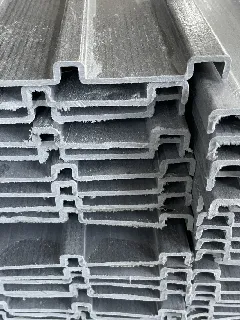loading...
- No. 9, Xingyuan South Street, Dongwaihuan Road, Zaoqiang County, Hengshui, Hebei, China
- admin@zjcomposites.com
- +86 15097380338
- Welcome to visit our website!
Competitive Prices for FRP Square Tubes in Various Sizes and Specifications Available Now
Understanding the Pricing of FRP Square Tubes
FRP, or Fiberglass Reinforced Plastic, square tubes have gained significant popularity in various industries due to their superior strength, lightweight nature, and resistance to corrosion. These tubes showcase excellent mechanical properties, making them ideal for applications in construction, transportation, and manufacturing. However, one may wonder about the factors influencing the pricing of FRP square tubes.
The Basics of FRP Square Tubes
FRP square tubes are manufactured using a composite material that consists of a polymer matrix reinforced with fiberglass. This combination results in a product that possesses high tensile strength and rigidity, often outperforming traditional materials like metal and PVC. The tubes come in a variety of sizes and can be tailored to meet specific application requirements.
Factors Influencing Pricing
1. Material Composition The type and quality of raw materials used in the production of FRP square tubes significantly influence their cost. High-quality fiberglass and resin can lead to a more durable and efficient product, but they can also increase production costs. Suppliers focusing on premium materials often ask for higher prices, justified by the longevity and performance of their products.
2. Manufacturing Process The method of manufacturing is a critical factor in the pricing of FRP square tubes. Advanced techniques, such as pultrusion, can enhance the mechanical properties of the tubes and ensure uniformity, but they might also involve higher operational costs. Manufacturers who invest in modern technology to streamline their production processes may offer competitively priced products while maintaining quality.
frp square tube price

3. Size and Customization The dimensions of the FRP square tubes also play a role in determining their prices. Standard sizes are usually more affordable than custom sizes due to the economies of scale. Additionally, if a buyer requires specific customization, such as varying wall thicknesses or added UV protection, this will likely increase the overall cost.
4. Market Demand Like any commodity, the price of FRP square tubes can fluctuate based on market demand. In industrial applications where there is a surge in the need for lightweight and corrosion-resistant materials — such as in marine or construction industries — prices may rise. Conversely, a downturn in demand may lead to price reductions as suppliers aim to clear inventory.
5. Supplier Reputation The reputation and reliability of the supplier also impact pricing. Established companies that have built a trustworthy brand and consistently deliver high-quality products may charge a premium for their offerings. On the other hand, newer or lesser-known manufacturers may offer competitive pricing to attract customers, albeit sometimes at the risk of compromising on quality.
Conclusion
When considering FRP square tubes for your next project, it is essential to evaluate the pricing in relation to the factors outlined above. While it may be tempting to opt for the lowest cost option, balance this with considerations of quality, durability, and suitability for your specific application. Investing in high-quality FRP square tubes can lead to significant long-term benefits, including reduced maintenance costs and enhanced performance.
In conclusion, understanding the dynamics of FRP square tube pricing is integral to making informed purchasing decisions. By considering material quality, manufacturing processes, market demand, customization needs, and supplier reputation, you can better navigate the options available and select the best product for your specific requirements. Whether you’re in construction, transportation, or manufacturing, the choice of FRP square tubes can significantly impact the success of your project.
-
Premium FRP Handrail for All ApplicationsNewsAug.29,2025
-
Low Maintenance FRP Mini Mesh Grating ProductsNewsAug.29,2025
-
Innovative FRP Square Tubes for Modern Industrial SolutionsNewsAug.29,2025
-
FRP Water Storage Tanks Wholesale Solutions for Bulk BuyersNewsAug.29,2025
-
FRP Molded Grating Solutions for Diverse Industrial ApplicationsNewsAug.29,2025
-
Construction Advancements Through FRP Pultruded ProfilesNewsAug.29,2025
-
Why Choose FRP Railings, Guardrails, and Handrail Systems?NewsAug.29,2025
